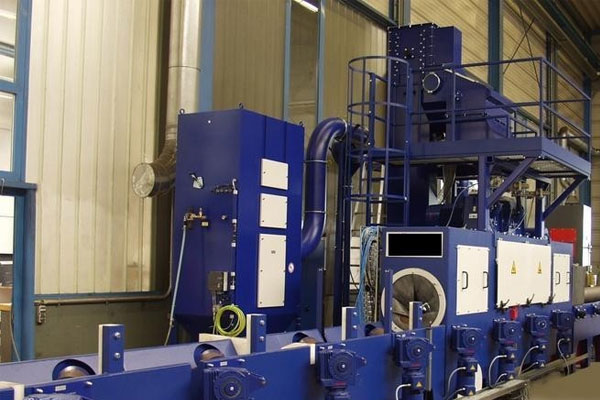What are the methods of forging cleaning
Forgings cleaning is the process of removing surface defects of forgings by mechanical or chemical means. In order to improve the surface quality of forgings, improve the cutting conditions of forgings and prevent the surface defects from enlarging, it is required to clean the blank and forgings at any time during forging production.
In order to improve the surface quality of forgings, improve the cutting conditions of forgings and prevent the surface defects from enlarging, it is required to clean the blank and forgings at any time during forging production. Steel forgings are usually cleaned with a steel brush or simple tool before being forged after heating. Billet with large section size can be cleaned by high-pressure water injection. The oxide skin on the cold forgings can be removed by pickling or blasting. The oxide scale of nonferrous alloy is less, but it should be pickled before and after forging to find and clear the surface defects in time. The surface defects of billet or forging are mainly cracks, folds, scratches and inclusions. These defects, if not removed in a timely manner, will cause adverse effects on subsequent forging processes, especially on aluminum, magnesium, titanium and their alloys. The defects exposed after pickling of the nonferrous alloy forgings are generally cleaned with files, scrapers, grinder or pneumatic tools, etc. The defects of steel forgings are cleaned by pickling, blasting (shot), shot blasting, roller, vibration and other methods.
A chemical reaction is used to remove the metal oxide. Small and medium forgings are usually put into the basket in batches and completed through several procedures such as oil removal, pickling and corrosion, rinsing and blow-drying. The pickling method has the characteristics of high production efficiency, good cleaning effect, no deformation of forgings and unlimited shape. In the process of pickling chemical reaction, it is inevitable to produce gases harmful to human body. Therefore, there should be exhaust device in pickling room. Pickling different metal forgings should be according to the metal properties to choose different acid and composition ratio, the corresponding pickling process (temperature, time and cleaning method) system should be adopted.
Sand blasting (shot) and shot blasting cleaning
Sand blasting (shot) powered by compressed air makes sand or steel shot move at high speed (the working pressure of sand blasting is 0.2-0.3mpa, and the working pressure of shot blasting is 0.5-0.6mpa), which is sprayed on the forging surface to wipe off the oxide scale. Shot blasting relies on centrifugal force of rotating impeller at high speed (2000 ~ 30001r/min) to shoot the steel shot onto the forging surface to knock off the oxide scale. Sand blasting cleaning dust, low production efficiency, high cost, used for special technical requirements and special materials forgings (such as stainless steel, titanium alloy), but must use effective dust removal technology measures. Shot peening is relatively clean, there are also disadvantages of low production efficiency and high cost, but the cleaning quality is higher. Shot blasting is widely used because of its high production efficiency and low consumption.
Shot peening and shot blasting can not only remove the oxide skin, but also make the surface of forging work hard, which is beneficial to improve the anti-fatigue ability of parts. For the forgings after quenching or quenching and tempering treatment, the working hardening effect is more significant when large size steel shot is used, the hardness can be increased by 30% ~ 40%, and the hardened layer thickness can be up to 0.3 ~ 0.5mm. In production, steel shot with different material and grain size should be selected according to the material and technical requirements of forgings. If the forgings are cleaned by blasting (shot) and shot blasting, surface cracks and other defects may be concealed, which may easily cause missing inspection. Therefore, methods such as magnetic inspection or fluorescence examination (see physical and chemical examination of defects) are needed to examine the surface defects of the forging.
In the rotating drum, the forgings are bumped or ground to remove the oxide skin and burrs from the workpiece. This cleaning method uses simple and convenient equipment, but is noisy. Suitable for small and medium-sized forgings which can bear certain impact but not easily deform. The roller clean without abrasives, only with triangular iron blocks or steel balls with diameter of 10 ~ 30mm without abrasives, mainly by mutual impact to clean the oxide scale. The other is to add abrasive such as quartz sand, scrap grinding wheel, sodium carbonate, soapy water and other additives, mainly by grinding to clean.
A certain proportion of abrasives and additives is mixed in the forgings and placed in the vibrating container. By the vibration of the container, the workpiece and the abrasive are ground mutually, and the oxide skin and burrs on the surface of the forgings are ground. This cleaning method is suitable for cleaning and polishing small and medium precision forgings.
